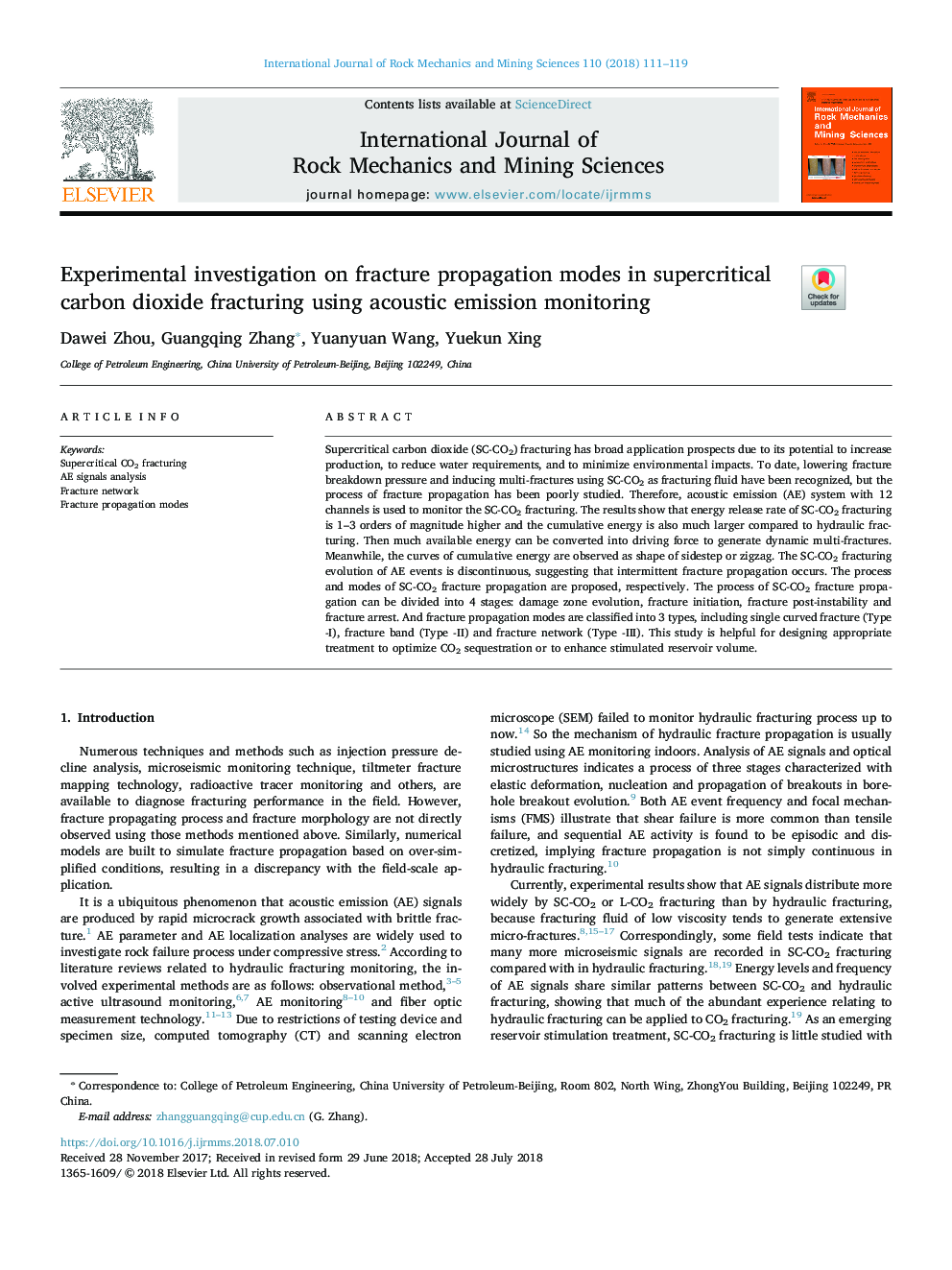| Article ID | Journal | Published Year | Pages | File Type |
|---|---|---|---|---|
| 7206079 | International Journal of Rock Mechanics and Mining Sciences | 2018 | 9 Pages |
Abstract
Supercritical carbon dioxide (SC-CO2) fracturing has broad application prospects due to its potential to increase production, to reduce water requirements, and to minimize environmental impacts. To date, lowering fracture breakdown pressure and inducing multi-fractures using SC-CO2 as fracturing fluid have been recognized, but the process of fracture propagation has been poorly studied. Therefore, acoustic emission (AE) system with 12 channels is used to monitor the SC-CO2 fracturing. The results show that energy release rate of SC-CO2 fracturing is 1-3 orders of magnitude higher and the cumulative energy is also much larger compared to hydraulic fracturing. Then much available energy can be converted into driving force to generate dynamic multi-fractures. Meanwhile, the curves of cumulative energy are observed as shape of sidestep or zigzag. The SC-CO2 fracturing evolution of AE events is discontinuous, suggesting that intermittent fracture propagation occurs. The process and modes of SC-CO2 fracture propagation are proposed, respectively. The process of SC-CO2 fracture propagation can be divided into 4 stages: damage zone evolution, fracture initiation, fracture post-instability and fracture arrest. And fracture propagation modes are classified into 3 types, including single curved fracture (Type -I), fracture band (Type -II) and fracture network (Type -III). This study is helpful for designing appropriate treatment to optimize CO2 sequestration or to enhance stimulated reservoir volume.
Keywords
Related Topics
Physical Sciences and Engineering
Earth and Planetary Sciences
Geotechnical Engineering and Engineering Geology
Authors
Dawei Zhou, Guangqing Zhang, Yuanyuan Wang, Yuekun Xing,
